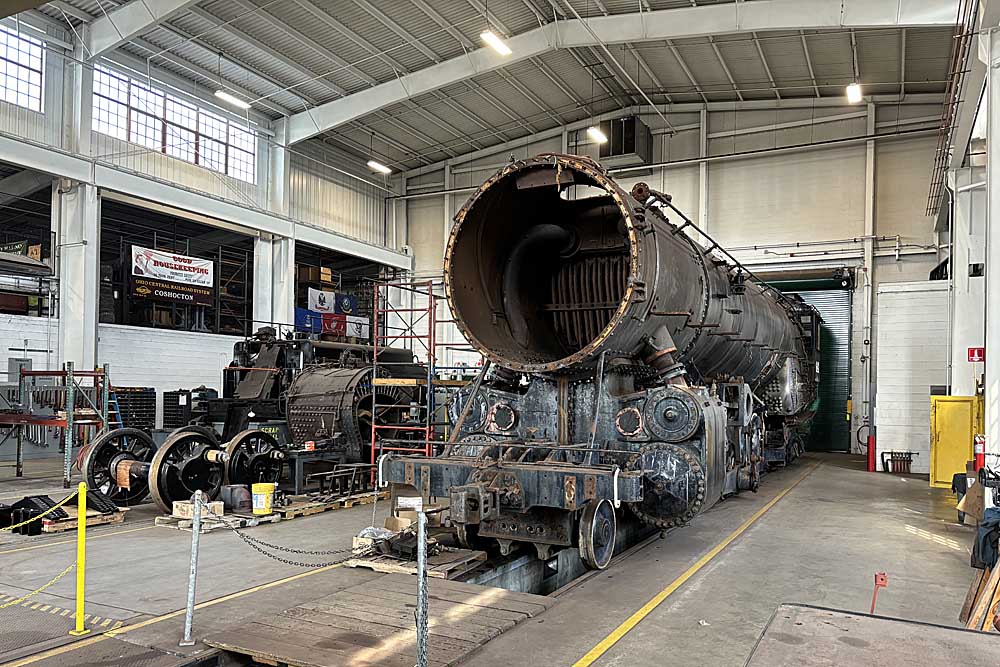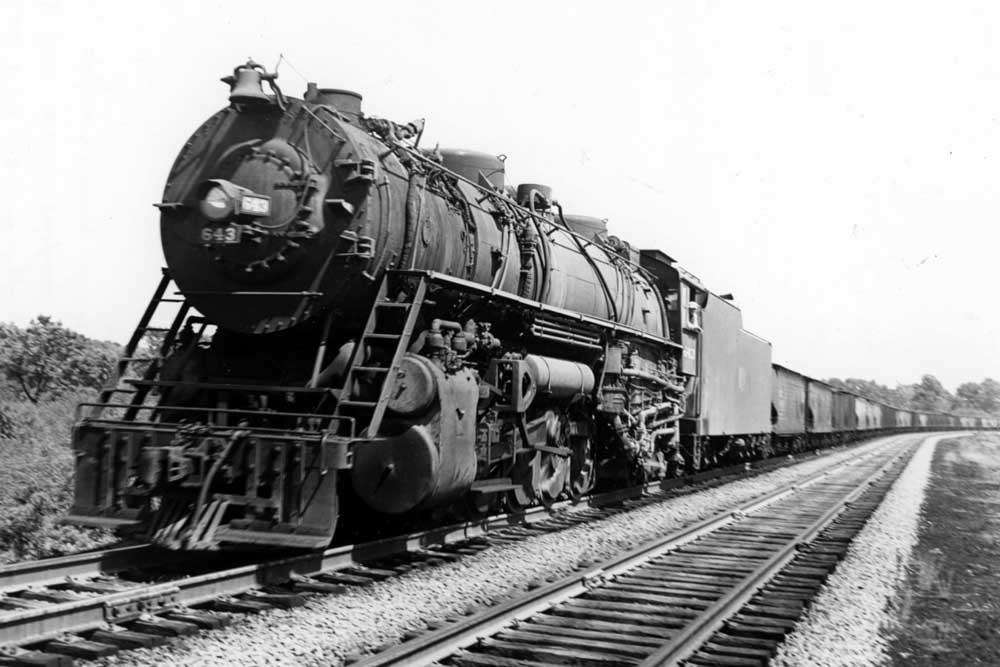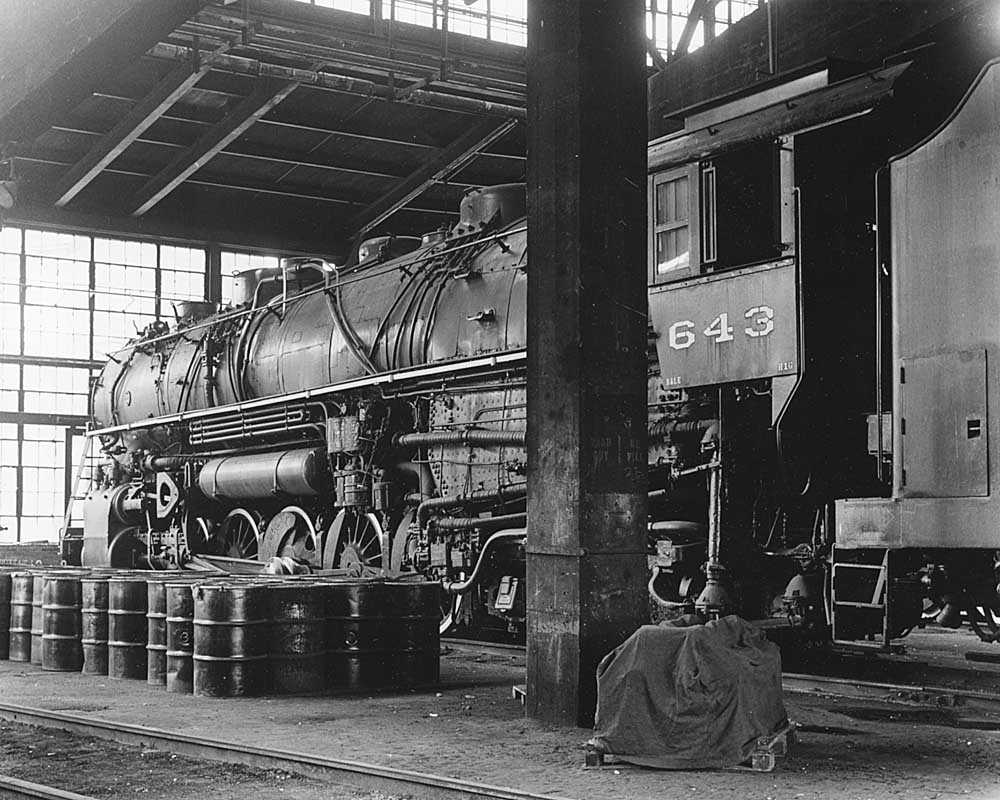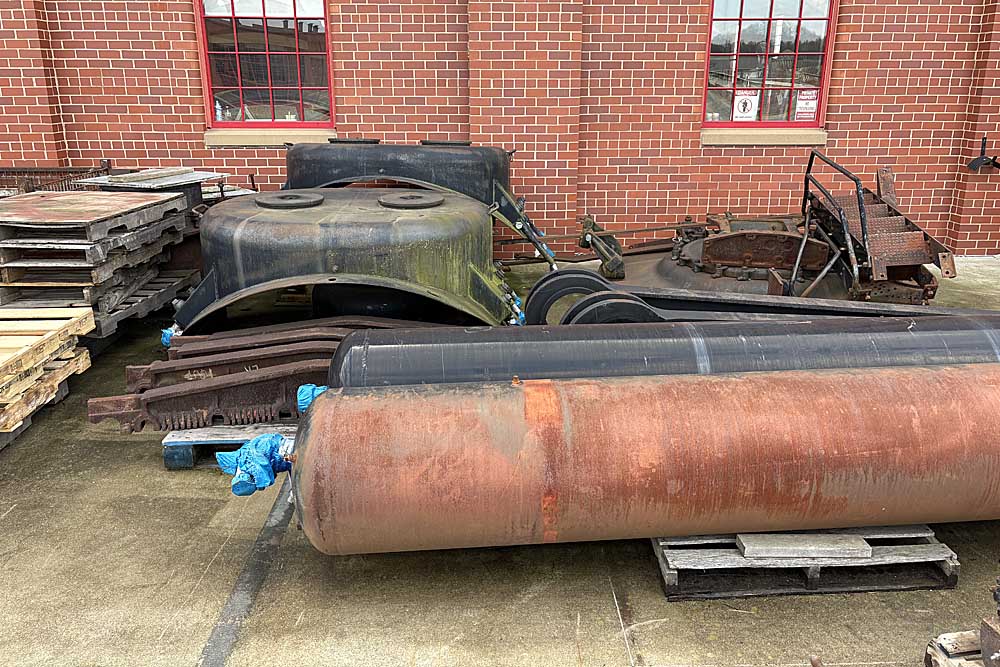
If there’s one thing you could never accuse the late Jerry Joe Jacobson of, it was thinking small. At every turn in his remarkable career as a railroader and preservationist, he went big. Really big.
When he got started in the shortline business 40 years ago, he began with a modest 35-mile former New York Central branch in eastern Ohio. Within a few years he’d created the 550-mile Ohio Central System, a powerhouse of a regional railroad made up of 10 separate properties. In 2008, he sold it to Genesee & Wyoming for an estimated $234 million.
Next came Jacobson’s stunning Age of Steam Roundhouse & Museum, which opened in Sugarcreek in 2011. It’s not just an exacting replica of a large-scale 1920s era engine terminal, it also houses a collection of 23 steam locomotives and a yard full of diesels and passenger and freight cars. Today, Age of Steam is one of America’s premiere railroad museums, with an 18-stall roundhouse, a busy backshop, and now selected hours open to the public.
But Jacobson, who died in 2017 at age 74, would not have been satisfied until he secured his most cherished quarry, Bessemer & Lake Erie No. 643, the last remaining example of B&LE’s roster of 47 huge 2-10-4 Texas types. Today “The King,” as Jacobson called it, is home in Sugarcreek. It was delivered to the museum in January and awaits work in the Age of Steam shop, where I caught up with it recently.
To me, the 643 looks overwhelming inside the neat-as-a-pin shop, especially next to smaller engines being restored on adjacent tracks. The 2-10-4 will easily be the largest machine in the museum’s collection and should look right at home when it’s ultimately parked in the roundhouse next to Nickel Plate 2-8-4 763 and Grand Trunk Western 4-8-4 6325, the other “big engines” at Sugarcreek.
The story of how a huge engine like 643 even managed to survive is one of those unlikely tales so emblematic of steam. It starts with the Bessemer itself, one of several railroads owned by U.S. Steel, which was single-minded in its railroad operations. When B&LE began ordering 2-10-4s from Baldwin in 1929, the engine had a simple assignment: get iron ore loads off lakeboats at Conneaut, Ohio, head south and deliver them to the end of the railroad at North Bessemer, Pa., where they would be handed off to U.S. Steel’s Union Railroad and subsequently delivered to the company’s mills. Conversely, get northbound coal loads back to those same lakeboats.
The trick was negotiating the challenging grade between Conneaut and B&LE’s main engine terminal at Albion, Pa. Distance wasn’t a problem — only 13 route miles — but the elevation was: Conneaut sits as the bottom of the Lake Erie basin at 572 feet above sea level; Albion is at 905 feet. The resulting 333 feet may not sound like much until you’re trying to get over it with a 13,000-ton train. A single 2-10-4 on the head end often was matched with a pair of identical helpers at the rear. Think of that — a total of 30 64-inch driving wheels digging in on a single train.

By all accounts, the H-1 engines were hugely successful. “The booming exhausts and massive stature of these powerful machines made an awesome spectacle as they trudged confidently through the hills and small towns of rural western Pennsylvania,” wrote steam historian Bert Pennypacker. “As examples of their great size, just consider that the overall total heating surface of their monstrous boilers, including firebox, flues, tubes, and superheater came to a whopping 8,390 square feet, while the weight per driving axle amounted to 74,000 pounds. The combined total weight of engine and tender came to 901,340 pounds, more than that of many articulateds.”
Actually, the B&LE’s H engines were knockoffs, virtual duplicates of the Burlington’s Baldwin-built M-4 2-10-4s. They weren’t B&LE born and bred, but that was fine by U.S. Steel. “The railroads owned by U.S. Steel have never given a fig for prestige so long as their owner’s ore was hauled to the mills efficiently,” concluded Trains Editor David P. Morgan.
Dieselization swept over the B&LE by 1952 and soon all the 2-10-4s were retired, although 18 managed to be reassigned for a time to Duluth, Missabe & Iron Range, another U.S.S. road. In the end, only Bessemer & Lake Erie No. 643 was saved, stored for many years in the B&LE roundhouse at Greenville, Pa., and later moved to various locations around Pittsburgh after its sale to private owner Glenn Campbell. Despite valiant attempts at restoration, Campbell was unsuccessful at getting the 643 back in steam.
Meanwhile, Campbell and the 643 had a suitor: Jerry Joe Jacobson, who never really let the 643 out of his sights. Although Jacobson died before the sale of the engine to the museum in 2019, in many ways the crew at Sugarcreek sees 643’s acquisition as a personal victory for the founder.

“Jerry’s intent to add B&LE 643 to his collection was one that called for the correct alignment of factors to be in place,” explains museum Executive Director Pete Poremba. “These all came together after Jerry had passed, but this was still Jerry’s plan and ambition. Without that inspiration, Age of Steam may not have undertaken this formidable challenge. Since Jerry aspired to have The King at his roundhouse, the only option was march ahead and follow through with the mission.”
“Formidable” is an understatement. The transfer of 643 from Pittsburgh to Sugarcreek involved months of planning, sorting through clearance and weight restrictions and finding the right contractor partners. In the end, the crew and a crane operator had to separate the 643 into two huge basic pieces: the boiler, to be transported in a depressed-center flatcar, and the locomotive’s frame and running gear, moved atop a standard flatcar. The whole shebang arrived at Sugarcreek on January 31.
Now, the 643 is beginning to get the attention it deserves. Not to run again, mind you: Age of Steam has a good relationship with its current Ohio Central connection, but the line through Sugarcreek is not up to supporting something so monstrous as the 643. There are no plans to steam up the 643.
Instead, in the months ahead, the 643 will gradually come back together as all major parts and assemblies are cleaned, painted, and reinstalled on the engine. They are stored just outside the backshop, carefully arranged in rows and numbered. “It’s a big project cleaning all the loose materials,” says Chief Mechanical Officer Tim Sposato, “figuring out what goes on the first, then going on from there. It will take a lot of time and labor.”
At the moment, shop crews are busy on other projects, notably the restoration to steam of Yreka Western 2-8-2 No. 19, a 1915 Baldwin that kicked around in Arkansas and Mexico before ending up on the McCloud River Railroad in northern California, and later Yreka Western. Age of Steam purchased it in 2016 and Sposato says the goal is to fire it up some time this summer and run it next year.

Then the attention will return to the 643. Its restoration will be meaningful to Sposato, who sort of grew up with the engine. He helped owner Campbell retrieve the engine from B&LE’s Greenville roundhouse in 1983 and later lived in the Pittsburgh area when he worked for the Montour Railroad, helping Campbell with the 643 at various locations around the city. Later he picked up the 643 trail with Jacobson.
“Jerry and I spent numerous hours and many trips up to Pittsburgh to talk with Glenn Campbell over the years. For Jerry, the engine was very elusive,” recalls Sposato. “Now I get to marvel at it every day when I see it in the backshop. I don’t have to drive to Pittsburgh to see it. Isn’t that something!”
Indeed, it is. Standing there in the shop, Bessemer & Lake Erie No. 643’s massive boiler looming over you, it’s easy to identify with the CMO’s sense of wonder. Not to mention that of the founder. Mission accomplished, Jerry.














At least at Sugarcreek, the loco will be stored inside and with all her parts protected. I always had dreams of seeing this engine run back in the 80s or 90s when that was predicted under Campbell’s ownership.
Nice anecdote. Duluth would have been a good home. too.
Great story! Glad it made it to Sugar Creek safely as Jerry intended. One story that I don’t think was ever told about 643 – it almost made it to Duluth, Minnesota! The late Don Shank, VP and GM of DM&IR, a founder of the Lake Superior Railroad Museum and well connected with the US Steel told me during an interview that when the museum was starting up in Duluth in the early 1970s, the B&LE offered to give 643 or 0-10-2 No. 604 to the museum, since of course DM&IR had owned the 18 B&LE 2-10-4s, which were all scrapped. Shank declined, his reasoning being they already had a “big” engine in DM&IR 2-8-8-4 No. 227, plus 643 had not run on the DM&IR (although 604 sure did). So it stayed in the B&LE roundhouse and eventually had this happy ending.
It is good to see 643 inside for the first time in a decade or more. I saw her several times in the Greenville roundhouse about the time that picture was taken, in fact I was selling the weekly Grit at the gate on Fridays at 3:30.